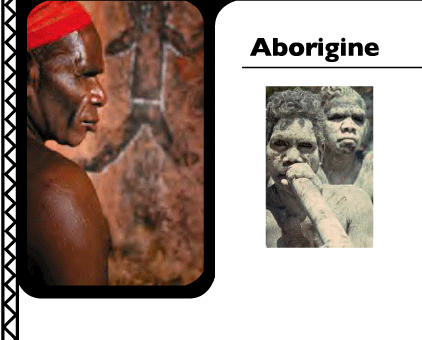|
|
The aborigines have an intricate classification
system that defines kinship relations and regulates marriages.
The Kariera, for example, are divided into hordes, or local
groups of about 30 people, which are divided into four classes,
or sections. Membership in a section determines ritual and
territorial claims. In half of the hordes the men are divided
among the Karimera and Burung sections; in the other half
they are divided among the Palyeri and Banaka sections. These
sections are exogamous, and rules of marriage, descent, and
residence determine how these sections interact: Karimera
men must marry Palyeri women, and their children are Burung,
and so on. Sons live in the same hordes as their fathers,
so the composition of hordes alternates every generation.
The complex system, by requiring each man to marry a woman
from only one of the three possible sections, fosters a broad
network of social relations and creates familial solidarity
within the horde as a whole. Aborigines maintain elaborate
systems of totemism (the belief that there is a genealogical
relationship between people and species of plants or animals).
They see the relationship between totemic plants and animals
as a symbolic map of the relations between different people.
Contact with British settlers, beginning in 1788, initially
led to economic marginalization, a loss of political autonomy,
and death by disease. So-called pacification by force culminated
in the late 1880s, leading to a massive depopulation and extinction
for some groups. By the 1940s almost all aborigines were missionized
and assimilated into rural and urban Australian society as
low-paid laborers with limited rights; many aborigine children
were taken from their natural parents and given to foster
parents to promote assimilation.
In 1976 and 1993 the Australian government enacted land-rights
legislation that has returned to the aborigines a degree of
autonomy, and court decisions in 1992 and 1996 recognized
aboriginal property rights. The recent increase in aboriginal
population reflects improved living conditions and a broad
and inclusive definition of aboriginal identity on the part
of the government. Their average standard of living and life
expectancy, however, are not comparable with that of most
Australians. In 1999 the Australian government issued an official
expression of regret for past mistreatment of aborigines,
but has opposed issuing the formal national apology sought
by aborigine leaders, fearing that would encourage claims
for compensation.
|
|













